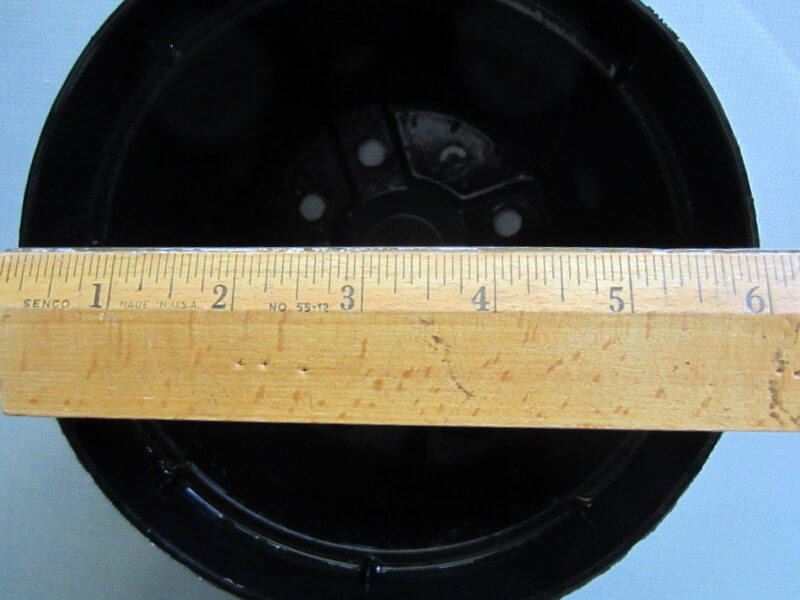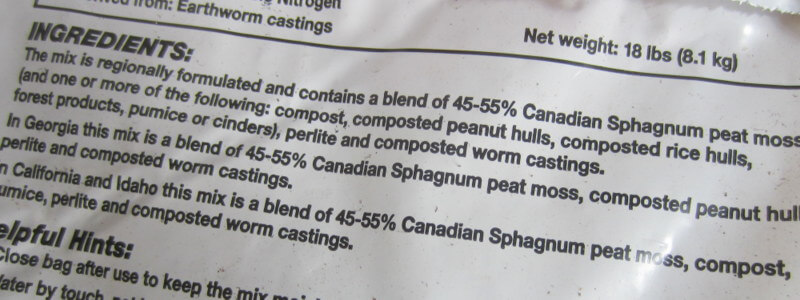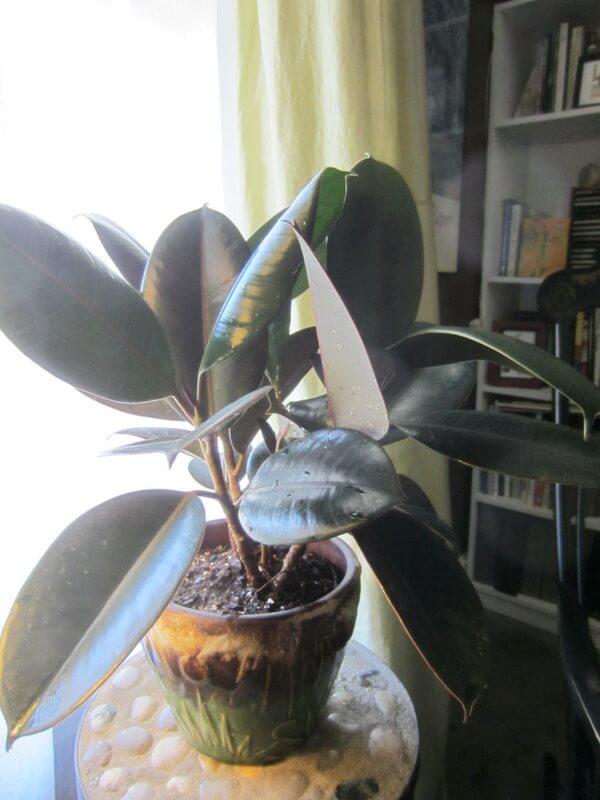
It is midwinter. You are occasionally stuck indoors, but your fingers are itching to play in the dirt. Why not channel that frustrated gardening energy into repotting some of your indoor house plants? As most houseplants appreciate being bumped up into a larger pot every couple of years, this activity could be beneficial for both you and your green cohabitants.

Check the Roots
First, check if the houseplant you have in mind for an overhaul is actually pot bound. The most obvious warning sign that it is time to repot is that your plant dries out quickly between watering, even in wintertime when house plants are generally resting. Then, ask yourself if water runs straight through the pot and out the bottom when you water it. Or, is there a noticeable gap between the inside rim of the pot and the soil?
If you answered “yes” to these questions, take your potted plant where you can work on it, and gently remove it from the container to examine its roots. Are the roots matted? Do roots circle around the outside edge of the potting medium? Are there visible air pockets in the potting medium? Are any roots growing through the drainage hole of your container? Again, if you found some of these markers, you know for certain that you need to repot this plant.
Water your plant in its original container, then allow it to rest for about an hour to reduce stress during transplanting. This waiting period is perfect for hunting for a larger container, thoroughly washing the container you are going to use, and cleaning up the plant.

Cleaning New Transplants
When tidying a house plant, please don’t pull off old leaves and spent flowers as this may damage the plant. Instead, take a pair of scissors or sharp pruners to trim off any dead material. You can also trim off the dried brown tips of leaves if you think that this makes the plant look better.
Next, wash dust off smooth-leaved foliage houseplants. These plants can be taken into a sink or shower and rinsed directly with tepid water. Make sure that you also get the undersides of the leaves. If you need to clean your plant in place, just gently wipe each leaf from the trunk or leaf base toward the tip with a damp cloth. I still like to use the old-fashioned recipe of 1 part milk to 2 parts warm water to wash smooth foliage, and this treatment will leave a slight shine behind.
For fuzzy-leaved plants, like African Violets, clean them by misting their leaves with tepid water, then keep them out of any direct sunlight until after they are completely dry.

Check for Insects
Don’t forget to check your plant closely for overwintering insects. Spider mites are notorious for hiding on their almost transparent webs in the foliage of houseplants as these minuscule mites thrive in the low humidity of our nicely heated homes. If you spot an insect problem, treat it before you return the plant to its place.
Soil Selection
Now, it is time to repot. I prefer to use Black Gold® Natural & Organic Potting Soil Plus Fertilizer for both indoor pots and outside containers. For my specialty plants, I switch to Black Gold® Cactus Mix, Black Gold® Orchid Mix, Black Gold® African Violet Potting Soil, or Black Gold® Moisture Supreme Container Mix for those plantings that need extra moisture all of the time.
Open any bag of Black Gold potting medium. You will immediately notice that the soilless potting medium is light and friable, and combines several key ingredients. The primary ingredient is Black Gold® Peat Moss, which is comprised of 100% Canadian Sphagnum Peat Moss. It is both sustainably harvested and OMRI Listed for organic gardening.
Perlite, which is a lightweight, expanded volcanic rock, is used to improve both drainage and aeration. The specialty mixes often contain vermiculite, a naturally occurring mineral that is highly absorbent, lightweight, and a common addition to soilless growing mixes as it has a high water-holding capacity and neutral pH to promote faster, healthier root growth.

Black Gold also utilizes organic material close to the source, so you will note that its compost components change depending on what part of the country the product was manufactured. Can’t get more local than that!
Repotting
Tip your houseplant out of its original container, then using your fingers, tenderly tease circling roots loose and remove most of the old potting medium from the exposed root ball.
Place a small amount of your new potting medium in the bottom of the new, clean container. Do not place rocks, broken pieces of older pots, or Styrofoam pellets in the bottom of a pot, as this only reduces the amount of potting soil that your plant needs to remain healthy.

Place your plant into its new pot, and begin filling in around the sides with potting medium, making sure that you work the soil into all of the empty spaces and firm it around the edges. It may be tempting to top dress your container, but it is better to leave the original soil line of the plant exposed.
Water the newly transplanted houseplant, again, and fill in any depressions you may see with more potting medium. Allow the plant to rest and drain before placing it back where it is usually situated.
There. You just spent some quality gardening time nurturing your indoor plants. This may help tide you over until you can go back outside.

